Scroll to see more...
What Choices Do I Have?
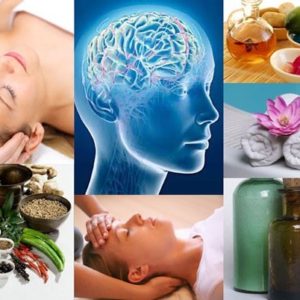
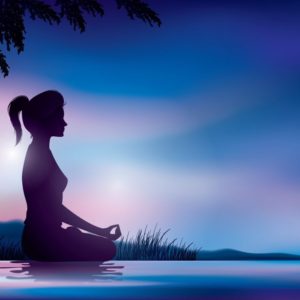
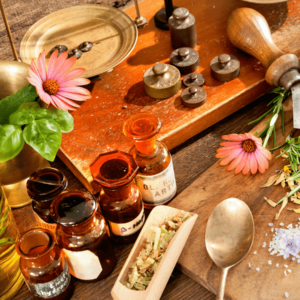
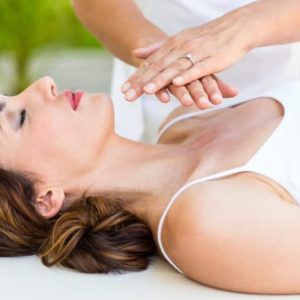
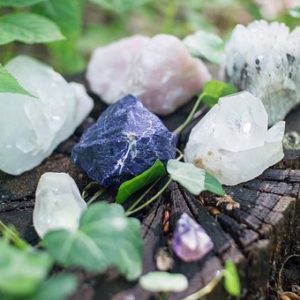
Every moment you live, you make choices. The choices made today influence what you experience in the present and in the future.
Many of the chronic illnesses today are caused by environmental impacts AND lifestyle choices. Regardless of the condition, the steps to a healthier life are very much the same.
Discover how you can make small changes that create HUGE differences in how you look, feel, and ultimately recover from many common ailments.
In 2002 Jane was diagnosed with stage II metastatic breast cancer. Instead of relying on others to direct her recovery, she created her own action plan and called it a Healing Victory Campaign. Now Jane will teach YOU the Healing Victory Campaign Program™.
FAQ's About Alternative Medicine
5 Most often asked questions about Alternative Medicine
What is the difference between alternative medicine and conventional medicine?
Generally speaking, most high quality alternative medicine is founded on six core principles and practices that differ from the principles and historical practices of conventional medicine.
They are:
The healing power of nature first, and technique and technology second.
Probably the most important difference is that alternative medicine is founded on a deep belief in the healing power of nature (vis medicatrix naturrae). Alternative medical providers accept that within us is a natural ability to heal, an inherent recuperative power that is the key to all healing. The alternative practitioner believes his or her job is to support and stimulate this natural healing ability inherent in each patient.
Biomedicine or conventional medicine has historically tried to reduce the healing process to a series of physiological, physical, and chemical reactions that can be measured and documented by modern science. While there is some truth in this perspective, science has proven it to be an incomplete picture of the healing process. Conventional medicine has come to place more value on the techniques and the technology rather than on the inherent healing power of nature we possess as human beings.
Conventional medicine has historically tried to replace the body’s natural healing response by quickly removing symptoms. For example, instead of stimulating and strengthening the immune system to fight an ear infection in a toddler, a biomedical doctor will usually prescribe an antibiotic. The child often receives immediate relief, but at what price? The antibiotic wreaks havoc on their developing digestive system by destroying valuable “friendly” bacteria needed for good digestion. Also, the child’s immune system is not any stronger to ward off the next ear infection, thus creating a dependency on antibiotics. The price of immediate relief is the threat of future long-term health problems for the toddler.
The alternative medical practitioner, on the other hand, would suggest a less drastic treatment that stimulates the body’s natural healing power. Relief might come through warmed drops of mullein garlic ear oil. Immune stimulation might come through a combination herbal tincture. In truth, a full healing response could take ten days, but the long-term benefits to the child are a stronger immune system and an uncompromising digestive system.
Patient centered rather than physician centered
Biomedicine has historically been perceived as more “physician centered,” in which the doctor’s opinions and beliefs are considered more important than the patient’s. High quality alternative medicine, on the other hand, is first and foremost “patient centered,” in which the feelings, beliefs, and the opinions of the patient are essential elements in the treatment decision-making process. High quality alternative medicine is founded on a deep appreciation of the wonder and mystery of being a unique human being. According to the Burton Goldberg Group’s Alternative Medicine: The Definitive Guide, “The return to health . . . is a road which each person must walk according to his or her unique individuality. It is also a road that needs to address one’s entire being, taking into account one’s mental, emotional, and physical aspects, as well as the structural, biochemical, and energetic components that shape each of us.”8
Conventional medicine has come to see the patient as his or her diagnosis rather than as an individual. Further, the role of the patient is a more passive one, being subjected to the authority and expertise of the doctor. Also, in the biomedical model, historically it is assumed that the doctor’s skills and best judgment are the final authority. The idea of a shared decision-making process regarding treatment between the doctor and the client/patient is contrary to the traditional role that doctors have historically played in our medical system.
The origins and repercussions of this biomedical doctor/ patient model is explained by author Norman Cousins:
For the past fifty years, the practice of medicine has been dominated by the need to identify diseases and germs. Through the discoveries made by the microscope and the advent of antibiotics, medicine became very specific and technical. This tended to make doctors mechanistic. It tended to obscure recognition of the human soul and its role in contributing to both illness and recovery. Modern medicine tended to place undue emphasis on the prescription pad over bedside manner. This emphasis on medicine and medical machinery created a critical psychological separation between patient and physician. There is no bigger problem in medicine today because when a patient has an illness, nothing is more important than the doctor’s reassurance.9
It was the ancient Greek physician, Hippocrates, who said, “It is more important to know what sort of person has a disease than to know what sort of disease a person has.” Like Hippocrates, most alternative practitioners view their clients as human beings rather than a diagnosis. This is one of the reasons that alternative medicine has become so popular.
Results generally take longer
One primary goal of alternative medicine is to stimulate the body’s natural healing response and to let nature take its course. From this process, a true healing can occur, increasing the chances that the symptoms will not return. Some people find the slower rate of recovery frustrating if they are accustomed to immediate results from conventional medical treatments.
Here’s an example of how this slower healing can occur: At four months, our daughter Deana had a severe case of eczema — front and back, head to toe. She was miserable. Her pediatrician prescribed a lotion that contained cortisone. We knew some of the strong side effects of cortisone (including compromised vision) and decided not to put that drug on her young skin, even though her doctor was certain it would make her eczema disappear. Instead, we decided to seek a naturopathic doctor’s recommendations and made an appointment to see Rena Bloom, a licensed naturopathic physician we knew was well trained and had a special interest in infants and children.
After examining Deana and asking us many questions, Dr. Bloom suggested that Deana might be allergic to her formula. The formula she was taking was advertised as hypoallergenic for colicky babies — which Deana was. However, this hypoallergenic formula was fifty-two percent corn product, a common allergen in adults as well as children. Dr. Bloom gave us a recipe for a goat milk formula and suggested we try it on Deana. We felt very comfortable giving our daughter this formula because we had learned that goat milk’s nutrient makeup is very close to human mother’s milk.
After two weeks of an exclusive diet of goat milk formula, we noticed some improvement in our daughter’s condition. But because we assumed that Deana’s eczema should have cleared by then, we called Dr. Bloom to report our results. Dr. Bloom reminded us that she thought Deana would take a full four to six weeks to recover from the toxicity of her previous formula. She explained that Deana’s system was clearing out the toxins as quickly as possible and she needed the time to heal herself. In other words, we needed to be patient.
It took Deana the full six weeks to recover. When she did, she was noticeably more alert and happy. Not only that, her skin and complexion returned to “peaches and cream.”
Use of natural and whole substances
Many alternative treatments use natural substances such as herbs, botanicals, homeopathics, nutritional supplements, and whole foods. There is a general belief among naturopathic doctors that the use of whole or natural products to treat maladies adds more to the healing process than their synthesized counterparts. While many synthesized pharmaceuticals may be more potent and fast-acting, they also often come with unpleasant side effects. According to John R. Lee, M.D., coauthor of What Your Doctor May Not Tell You About Menopause, “Most over-the-counter and almost all prescribed drug treatments merely mask symptoms. . . . Drugs almost never deal with the reasons why these problems exist, while they frequently create new health problems as side effects of their activities.”12 On the other hand, natural substances are believed to produce fewer side effects, though they may take longer to work. The American public appears to be aware of this. In 1993, consumers spent approximately $1.5 billion on herbal remedies.13 As a result, more and more drugstores and shopping store chains now stock a full line of herbal supplements for their patrons.
My friends and family are skeptical about the merits of alternative medicine.
How do I help them feel confident in my decision to use alternative medicine?
To many people, alternative medicine is still suspect. Some of this is warranted. Not all of what is labeled alternative medicine can be assumed to be good medicine. So the concern and skepticism of your friends and family is only natural. The problem is that most people who are skeptical of alternative medicine base their caution on outdated information, facts that are only partially true, or complete misconceptions. Of course, there are those who would never even consider that alternative medicine has merit, regardless of what the facts are. (“Don’t confuse me with facts, my mind is made up!”)
Let’s look at the roots of the bias against alternative medicine: A great deal of this distrust can be traced directly to the beliefs and opinions of the conventional medical community. Since conventional medicine enjoyed an unquestioned confidence from the public for almost five decades, the public accepted the critical views about any treatments not part of conventional biomedicine. As a result, in time conventional medicine’s beliefs became the public’s beliefs.
According to the “Chantilly Report” to the NIH on alternative medicine, one conclusion the public reached regarding conventional medicine is that it is the “one true medical profession.” This originated through the “long-standing belief held by many conventional medical practitioners that they should be the only one representative voice for the whole of medicine.”14
Another result is the public now places an unrealistically high level of confidence in conventional medicine’s high-tech diagnostic and therapeutic procedures. Many presume that if procedures are “high-tech,” they must be very effective. However, evidence points to the opposite conclusion: High-tech is not always effective.
A case in point: A young woman checked into a major New York hospital to treat a tumor on her chest. The hospital had a new experimental group and was researching the effects of microwave hypothermia on cancer. The woman was one of the first participants in their research group. Unfortunately, the researchers didn’t have adequate thermal control and miscalculated the amount of hypothermia they gave this young woman. Within moments they had burned a hole right through her sternum. She also had burns from her chin down her entire neck and halfway down her trunk. After she recovered, she exclaimed that with such high technology in a major hospital in a large city, she had been very optimistic that she would be cured. She realized, however, that she should have been less optimistic, asked more questions, and been more cautious.
In contrast, many alternative treatments are not “high-tech” and are actually seen as “low-tech.” Consequently they are perceived to be ineffective when they actually are effective. For example, our neighbor’s one-and-a-half-year-old son Alex had a very high fever a few weeks ago. His parents took him to a pediatrician (M.D.) for a diagnosis. When they asked about using herbs to treat his infection, his doctor’s response was, “Herbs are for salads. He needs something more sophisticated to help him recover. Drugs.” This doctor was convinced of this fact despite the tremendous body of scientific research that indicates that herbs could, in fact, help the boy recover. Based on the recommendations they received from a naturopathic physician about other infections that Alex had in the past, his parents decided to use herbs before trying drugs. Within twenty-four hours of administering the recommended herbs to Alex, his fever disappeared and he was markedly better.
The public has grown to prefer the “safety of the status quo,” which, in the United States, is conventional doctors and their medicines. Because doctors routinely prescribe drugs such as antibiotics and sedatives, the public generally believes that they are the most effective treatments. However, several major magazines and national news programs have reported the hazardous side effects of these drugs. As a result, an increasing number of patients now voice their concerns about these drugs and ask about alternatives.
The most fervent critics of alternative medicine charge that alternative medical practitioners are “quacks.” The NIH’s “Chantilly Report” defends the alternative medical practitioner saying, “The term ‘quack’ generally means one who pretends to have medical knowledge but does not; that is, it implies the element of fraud. . . . [However] most alternative healers do possess some other sort of knowledge [than M.D.’s] that they and their clients believe is relevant to health.”15
Another charge is that alternative medical practitioners prey on the gullible and uneducated. The “Chantilly Report” also refutes this, stating that, “Recent studies of cancer patients indicate that well-educated persons with higher incomes are more likely to use alternative treatments, primarily because they want to take charge of their health.”16
When using alternative medicine, you will probably encounter skeptics with these or other misconceptions. When this happens, the best strategy is to present an “unbeliever” with real facts backed by respected sources. Generally this is a much more effective approach than sharing personal stories about miraculous cures. Irrefutable facts have a way of calming skeptics’ doubts – and sometimes – of changing their minds. Here are some facts that will alleviate the concerns and doubts of the people in your life:
- Worldwide, only ten to thirty percent of people use conventional medicine, 70 to 90 percent use alternative medicine.17
- Approximately $22 million of U.S. government money has already been spent on alternative medical research since 1992 at the National Institutes of Health and Public Health Services.18
- The American Medical Association (AMA), in Resolution #514, “is encouraging its members to become better in-formed regarding alternative (complementary) medicine and to participate in appropriate studies of it.”19
- Renowned hospitals, such as Columbia-Presbyterian Medical Center in New York, have created alternative medical clinics in their facilities.
- Almost one-third of American medical schools – among them Harvard, Yale, Johns Hopkins, and Georgetown Universities – now offer coursework in alternative methods. (See reference section for a complete list.)20
- Many alternative approaches have been scientifically proven to be less invasive, less dangerous, more effective, and more economical than conventional medicine.
- Mutual of Omaha says it saves about $6.50 for every dollar it spends covering nonstandard (read: alternative) treatments.21
- Seventy-four percent of the American population desire a more natural approach to health care.22
- Of the one out of three Americans who have used alternative _medicine, 84 percent said they would use it again.23
- Traditional Chinese medicine has been chosen by the World Health Organization for worldwide propagation to meet the health care needs of the twenty-first century.24
- The U.S. Government sponsors the use of acupuncture in drug rehabilitation programs.25
- There are five homeopathic hospitals in Great Britain run by the British National Service.26
- One out of three drugs prescribed in Germany is an herb.27
- One out of every ten Americans is under the care of a chiropractor.28
- In 1993, Americans spent an estimated $1.5 billion on herbal remedies – ten times more than was spent on over-the-counter sleeping pills from grocery stores and drugstores.29
- In 1991 Americans made more visits to unconventional health care providers (425 million) than to conventional doctors (388 million).30
- One out of three Americans were using unconventional medicine in that same year.31
- Americans spent almost $13.7 billion on unconventional care in that twelve-month period.32
- Seventy-five percent of that money was out of pocket.33
- Twelve percent of Fortune 500 companies offer alternative medicine as part of their health care compensation packages. That number is expected to increase to eighteen percent by the end of 1996.34
Despite all the facts and statistics you can offer others, when you are sure that you want to try alternative medicine, the most important information that you can offer the people who care about you is:
- You have investigated your options.
- You are confident in your choice.
- You look forward to sharing your success stories with them.
Should I go to a medical doctor (M.D./D.O.) or to an alternative practitioner?
Most health care professionals, be they alternative practitioners or medical doctors, recommend that you first go to a conventional medical doctor or to an osteopathic physician to get a diagnosis. D.O.’s and M.D.’s receive extensive training in diagnosing pathology (illnesses and diseases). If you visit an alternative medical practitioner who has not had the vast experience and training in diagnosing pathology that a conventional medical doctor or osteopathic doctor has, that person might miss a problem that could mean your very survival. Dr. Len Wisneski, corporate medical director for Marriott Corporation, says, “Many times a patient will come to me after they have been working with an acupuncturist. I have found problems that the acupuncturist missed. If we are looking at cancer, there is some precious time that has been lost, which we could have used to combat the malignancy.”35
After you have had a thorough examination, a diagnosis, and a recommended treatment program from an M.D. or D.O. then look at alternative medicine for other treatment options that might be as effective and less invasive. Of course, if you are in a crisis situation where time is of the essence, you will need to determine if you have the luxury of time to find an alternative. In a critical situation, your first and foremost commitment is to stay alive. In that case, conventional medicine may be your best answer. If this is not the case, we encourage you to look at all your alternative options.
Also, we encourage you to find a conventional doctor who will work with you as a team player as you explore your alternatives. Dr. Joe Jacobs, former director of the Office of Alternative Medicine at the National Institutes of Health says, “Keep your medical doctor informed about any alternative therapies you are trying or want to try. If you feel he or she is biased against alternative medicine, find another medical doctor. But maintain a relationship with an M.D [or D.O].”36 Just because there are shortcomings in our conventional medical system, don’t underestimate the tremendous skills, training, and value a medical doctor can bring to your health care. A conventional medical doctor or an osteopathic physician is an important part of your health care team. The biomedical system is usually your best source for getting a fast and accurate diagnosis. Always use conventional or osteopathic medicine first if you suspect you have a potentially life-threatening health problem.
How do I know who is well trained and competent alternative practitioner?
It can be overwhelming to realize just how many alternative techniques and treatments are available today. The answer is to learn how to find the appropriate alternative medical options for you in an easy, efficient manner. The information presented in Step One of this book will show you how to do that. It clearly explains how to find the most effective treatments from around the world for your health condition. It also can get you to information on how to “live well” while living with your health condition, thus enhancing your quality of life. By doing Step One: Learn your Options, you will gain the information and knowledge you need to make informed and wise decisions about which alternative treatment is right for you. To further support you in this, we have provided a list of relevant organizations, support and advocacy groups, computer search services, and Internet research sources in the Reference Section of this book.
Is alternative medicine safe?
This is another question that does not have a simple answer. In this country, “safe” means a treatment method has been endorsed by the Food and Drug Administration (FDA). Most of the treatments that are labeled as alternative medicine have not yet received this endorsement, and it’s possible they never will.
In the “Chantilly Report” on alternative medicine, it states that “the current Federal mechanisms of regulating medical research do not favor the evaluation of many forms of alternative treatment. Because the costs of developing, evaluating, and marketing new drugs are so prohibitive, pharmaceutical companies are not likely to invest time and effort in therapies, such as nutritional or behavioral approaches, that cannot be patented and are therefore unlikely to offer the opportunity to recover their investment and provide a return to stockholders. This means that many alternative therapies are likely to be casualties of the formal research process.”37
This information indicates that health care consumers need to look beyond the recommendations of the FDA when making health care decisions – especially when one considers that other countries have regulatory systems, similar in function to the FDA, that have competently evaluated the effectiveness of many alternative therapies. Europe, for example, takes note of substances that have a long history of effective use and approves them under “the doctrine of reasonable certainty.” This rule parallels the World Health Organization’s (WHO) Guidelines for the Assessment of Herbal Medicines, which states that a substance’s historical use is a valid way to document safety and efficacy in the absence of scientific evidence to the contrary.
European and the WHO assessments of alternative remedies are available to you. You will need to personally decide whether or not the World Health Organization and Europe’s standards of safety are adequate for you. While you ponder the issue, consider the following: In comparison with the rest of the world, the United States ranks fifteenth in life expectancy – behind Japan, Iceland, Sweden, Switzerland, Hong Kong, the Netherlands, Norway, Canada, Spain, Australia, France, Cyprus, Greece, and Italy. Further, the United States is ranked number one among the industrialized nations of the world in infant mortality, death of children under the age of five, AIDS, cancer among men, incidences of breast cancer, and malpractice lawsuits.38
You can reasonably assume that licensed alternative providers use treatments and techniques that are safe when used correctly. If you have a question about a particular treatment or remedy recommended by an alternative health care practitioner, ask both that practitioner and other experts to provide you with as much information as necessary to determine if you can personally have confidence in the recommended treatment.
Will alternative medicine work for me?
No system of medicine can guarantee success for every condition. Each system of medicine has certain health conditions for which it is best suited and some health conditions for which it would be the treatment of last choice. This is true for conventional medicine as well as alternative medicine.
An example is Chinese medicine, which has a long and respected history of treating conditions of infertility and impotence in less drastic and more natural ways than conventional medicine. Many couples who were unable to conceive have become happy parents after receiving a series of treatments of Chinese herbs and acupuncture for their condition.
The key to success with alternative medicine is to make sure you have all the accurate information you need from around the world about treating your health conditions. It can also get you information on how to “live well” while living with your health condition, thus embracing life. By doing Step One as outlined in this book, you can be assured of finding the right alternative medical treatment for your health care needs if one exists. Becoming familiar with good research from throughout the world on your alternative medical choices increases your chances of getting the results you want.
Is there a way to seek out good alternative medical care?
The five steps described in the upcoming chapters is the best answer to this question. By participating in Steps One to Five, you can responsibly and wisely choose good alternative medical care for yourself and your family. Whether you are just beginning your exploration of alternative medicine or you have been using alternative medicine for some time, following these five steps will allow you to make good decisions about any modality of medicine. And incidentally, in most cases, by following the five steps, you can save time and money, too.
The Five Steps are:
Step One: Learn Your Options – Add to your M.D.’s recommendations by researching the latest resources to get all your treatment options.
Step Two: Get Good Referrals – Find referrals through various sources and verify that these referrals have the capability to really help you.
Step Three: Screen the Candidates – Make use of an alternative practitioner’s staff to get reliable information about the provider and how they work.
Step Four: Interview the Provider – Ask the provider all the pertinent questions to know if you can confidently work with this professional.
Step Five: Form a Partnership – Maximize your healing potential by developing an active alliance with your alternative health care provider.
Each of these steps – and how to do them competently – are outlined in the next five chapters of this book. When used together, they form a process that will lead you through the maze of alternative medicine to the results you desire.
Are you ready to discover your healing journey? Then let’s get started!
Register below to be added to the mailing list and receive discounts on upcoming events, new products, and online seminars. You will also receive a free article on The Top Ten Superfoods that Turbo Boost the Immune System. Enter your name and email below.
